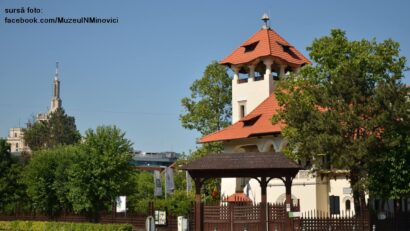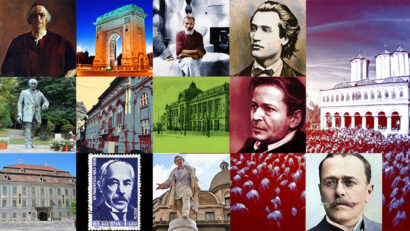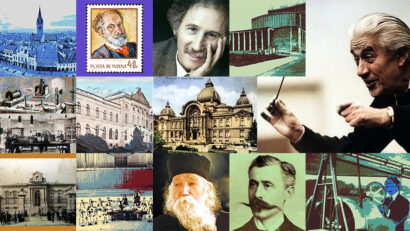Romanians and their Journeys in the 19th Century
As of 1800, a growing number of Romanians set out to discover Europe and the world.

România Internațional, 05.01.2019, 14:07
Scholar Dimitrie
Ralet outlined the profile of the Romanians in the late 18th and the
early 19th Century using the word sedentary. Ralet also defined the
Romanians as follows: The Romanian appears to have inherited from the Dacians
the characteristic of clinging to their own country. Yet before long, the
Romanian will get rid of that habit: as of 1800, a growing number of young
boyars, but also some of the elderly boyars, set out to discover first the Western
part of Europe, and then the whole world. Most of them got their memoirs and
impressions published. The first such boyar to have acquired some fame, also
because of the account he wrote of his journey, was Dinicu Golescu, through the
book titled An account of the journey I took in the year 1824, 1825 and 1826.
The journey
began in Transylvania, and then continued all the way to Hungary, Austria,
Italy, Germany and Switzerland. Yet before him, in 1807, Gheorghe Asachi was
the first young Romanian boyar to reach Vienna, then Rome, in order to pursue his
studies. So it is with Asachi and Dinicu Golescu that a rich travel literature
begins, whose protagonists were less familiar, albeit interesting characters.
Professor Mircea
Anghelescu who, among other works, edited an anthology including the
aforementioned texts, entitled Romanian travelers and their travels in the 19th
Century. Speaking about the Romanian 19th Century, here is Professor
Mircea Anghelescu himself:
The 19th
Century is, for us, a century that condensed lots of things that, by and large,
took two or three centuries to unfold, with other nations. We accomplished a
great many things in that century, there were many famous travellers who said
important things, and who come to mind almost automatically. Instead, some of
them, who are less known but otherwise extremely interesting, have been
neglected. What comes to mind is a lady with a rather boisterous life: Otilia
Cosmuta, the daughter of a Romanian protopope from Northern Transylvania, who
around 1900 married an official of the Austro-Hungarian Empire. Yet she was as
versatile as she was creative, artwise. She went to Germany to study painting,
and there she fell in love with Japan. She even went to Japan on a government
scholarship, being officially assigned to dispatch news as a correspondent. She
sent some very interesting materials about the life and culture of the
Japanese. She sent some interesting stuff from Paris as well, where she seems
to have met Brancusi.
The spirit of
the 1800s got extended until the outbreak of WWI. The beginning of all that was
rather unassuming, yet in the second half of the 19th Century, but
mainly in the early 20th Century, a great many Romanians had been
travelling around the world already, reaching the far end of it, be it for
relaxation of for adventure, or for scientific purposes. Dimitrie
Ghika-Comâneşti travelled to Africa, Basil Assan took a journey around the
world and Emil Racovita reached Antarctica. Other, less known names can be
found among the renowned personalities, yet their contribution was no less
valuable. Professor Mircea Anghelescu included them in his anthology as well.
Some of them
are mere adventurers who appear and disappear, the likes of some Foreign Legion
soldiers who around 1900 found themselves in Africa and, maybe because they
were getting bored, began sending all sorts of correspondence, only to
disappear after that. Their job at that time was quite risky. Around 1903-1904,
a leftist journalist in Galati, when his newspaper went bankrupt, set off to
Africa to get rich, taking up farming there. He stayed there for a few years
and failed lamentably, but this, too, is an experience worth writing about. To
someone who is unaccustomed with travel literature, it’s interesting to know that
Romanians, who, back in the 18th and 19th Centuries, had
a reputation for being very connected to their homeland, eventually turned into
big adventurers.
While, in the beginning, the discovery of Western
Europe placed our travellers into a disadvantaged position, in time, Romanians
discovered something else. Here is Mircea Anghelescu once again:
In the early 19th Century we found our
place in Europe. We realised that we were Europeans and consciously adopted a
European identity. Thanks to travellers, differences and resemblances between
various areas of European civilisation started being established.
However, before that to happen, a shock was necessary.
That shock that made us understand that we were way behind the others, and also
that, on the other hand, modernisation and Europeanisation were pretty handy,
as Romanians belonged more to the West than to the East that had assimilated
them for centuries. Also to the 19th Century and its travellers we
owe the rather fast bridging of the gaps between our country and Western
Europe.






























